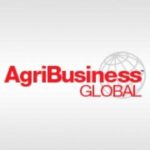How Syngenta Uses Digital Technology to Improve the Customer Experience
The pace at which technology has invaded the agriculture industry is staggering. Technological solutions seem to be appearing almost daily. And while it can often be difficult to follow all the news, when an industry giant like Syngenta offers a suite of solutions, it’s certainly worth noting.
In an exclusive interview with AgriBusiness Global DIRECT, Syngenta’s Ron Cowman, Head, Digital Agriculture Solutions, shares insight into the company’s digital ag offering and how it will benefit end users.

Ron Cowman, Head, Digital Agriculture Solutions, Syngenta
“When I began working in the technology sector, it was really focused more on what lagging indicators were there,” Cowman said. It was about creating a digital file cabinet to capture everything that was being done on the farm, and where we see that evolving. In addition to decision (making) and insights, what type of risk mitigation tools can be put into play or what types of predictive modeling can be put into place so that a customer, a grower, isn’t always working off what had happened, but they are working off the current environmental conditions and what could happen. That’s probably the biggest change.”
Change is a common word when discussing technology. In particular trying to figure out where the next breakthrough is going to come from or figure out how to take advantage of it.
“Well, your guess is as good as mine on this,” Cowman said. “The area of computational agronomy is likely the next area. And what I mean by that is where you’re really in depth at, and how the plants grow and interact with all the environments around them. The more we know about the plant interaction within that specific environment, the more detailed and prescriptive your data insight will be.
“Things like phenology will be really, really important as we start to think about predictive algorithms, because predicted algorithms are dependent upon historical basis and what that historical base is attached to,” Cowman continued. “The more detailed analysis we have of the growing environment, the soil, the plant itself and the interactions between all those environmental conditions will be a key piece into that agronomy insight or that predictability model. That’s where the future is headed from that perspective. And then, of course, the area of automation from the equipment perspective — driverless tractors and that I think that will all have a play down the road.”
As always, it’s about providing more information so members of the supply chain can make better decisions.
“I think there’s got to be some efficiency gained there, but there’s certainly commitment on companies to make that happen,” Cowman said. “And then, areas of precision application technology are going to be on the horizon, whether that’s a See & Spray technology or multiple AIs within a single application unit, those precision types of technologies are going to come to bear as well.”






